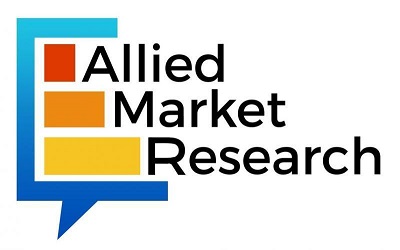
According to the report published by Allied Market Research, the global alcohol wipes market was pegged at $568.0 million in 2020 and is estimated to hit $1.13 billion by 2030, registering a CAGR of 7.3% from 2021 to 2030. The report provides an in-depth analysis of the top investment pockets, top winning strategies, drivers & opportunities, market size & estimations, competitive landscape, and changing market trends.
Rise in awareness regarding the use of wipes and maintaining optimal hygiene and increase in its demand from the healthcare industry drive the growth of the global alcohol wipes market. On the other hand, high inflammation property of alcohol wipes restrains the growth to some extent. Nevertheless, upsurge in e-commerce sales and increase in demand for the product during driving, trekking, and traveling are expected to create lucrative opportunities in the industry.
Alcohol wipes are as effective as hand rubs in inhibiting the growth of disease-causing microbes. Higher alcohol content equates to greater germ-killing power. In addition, these wipes contain a small amount of detergent to help clean oily debris. Although the alcohol concentration in alcohol wipes is strong enough to destroy microbe cell membranes, it is not strong enough to affect human skin cells. They are made of cellulose, polyester, or another absorbent fabric that is intended to collect germ debris.
The healthcare industry has expanded significantly over the last two decades, and is one of the world’s fastest growing industries. Countries such as the U.S., Switzerland, and Germany spend more than 10% of their GDP on healthcare. Hygiene and sanitation are the critical aspects in the healthcare industry. Thus, alcohol wipes find their major application in the healthcare industry, as they serve as an effective disinfectant and sanitizing solution. Isopropyl is commonly used in alcohol wipes, as it kills pathogens such as Hepatitis B and C, HIV, and bovine viral diarrhea virus.
Get detailed COVID-19 impact analysis on the Alcohol Wipes Market@ https://www.alliedmarketresearch.com/request-for-customization/12902?reqfor=covid
COVID-19 scenario-
To prevent the spread of the corona virus in residential communities, the Centers for Disease Control and Prevention (CDC) in the U.S. had recommended cleaning hands and high-touch surfaces with alcohol-based hand sanitizers, disinfectant sprays, or antibacterial wipes containing 60% or more alcohol. This factor has boosted the global alcohol wipes market.
This trend is most likely to continue post pandemic as well.
Download Sample Copy Of Report@ https://www.alliedmarketresearch.com/request-sample/12902
The global alcohol wipes market is analyzed across fabric material, end user, distribution channel, and region. Based on fabric material, the synthetic segment accounted for nearly two-thirds of the total market share in 2020, and is projected to rule the roost by the end of 2030. The natural segment, on the other hand, would cite the fastest CAGR of 7.8% throughout the forecast period.
Based on end user, the commercial segment contributed to more than three-fifths of the total market revenue in 2020, and is expected to lead the trail by 2030. The same segment would also grow at the fastest CAGR of 7.5% from 2021 to 2030.
Schedule a FREE Consultation Call with Our Analysts/Industry Experts to Find Solution for Your Business @ https://www.alliedmarketresearch.com/connect-to-analyst/12902
Based on geography, Europe held the major share in 2020, garnering around one-third of the global alcohol wipes market. Simultaneously, the market across Asia-Pacific would exhibit the fastest CAGR of 8.5% by 2030. The other two provinces discussed in the report include North America and LAMEA.
The leading market players analyzed in the global alcohol wipes market report include Cardinal Health Inc., Diamond Wipes International Inc., GAMA Healthcare Ltd., GOJO Industries Inc., Honeywell International Inc, Pal International Ltd., 3M Company, Unilever Group, Robinson Healthcare Ltd., and The Clorox Company. These market players have incorporated different strategies including partnership, expansion, collaboration, joint ventures, and others to brace their stand in the industry.
The industry is highly competitive, due to the presence of several manufacturers. To attract customer, companies are focusing on introducing novel products such as fragranced wipes. Swago, for example, introduced cologne-scented alcohol wipes for people who do not prefer to carry perfume. Surge in demand for disposable wipes is expected to increase the use of natural fabric material alcohol wipes. In addition, rise in consumer demand for low-cost goods is projected to offer remunerative opportunities for the expansion of the global market during the forecast period. As a result, companies are focusing on product development and pricing, thereby contributing toward the overall market growth.
Key findings of the study
The global alcohol wipes market was valued at $568.0 million in 2020, and is projected to reach $1,137.7 million by 2030, registering a CAGR of 7.3% from 2021 to 2030.
By fabric material, the synthetic segment was the highest contributor to the market, with $372.1 million in 2020, and is estimated to reach $724.0 million by 2030, at a CAGR of 7.0% during the forecast period.
By end user, the commercial segment was the highest contributor to the market, with $350.8 million in 2020, and is estimated to reach $719.6 million by 2030, at a CAGR of 7.5% during the forecast period.
By distribution channel, the specialty stores segment was the highest contributor to the market, with $223.1 million in 2020, and is estimated to reach $423.0 million by 2030, at a CAGR of 6.7% during the forecast period.
By region, Europe was the highest revenue contributor, accounting for $189.7 million in 2020, and is estimated to reach $356.1 million by 2030, with a CAGR of 6.6%.